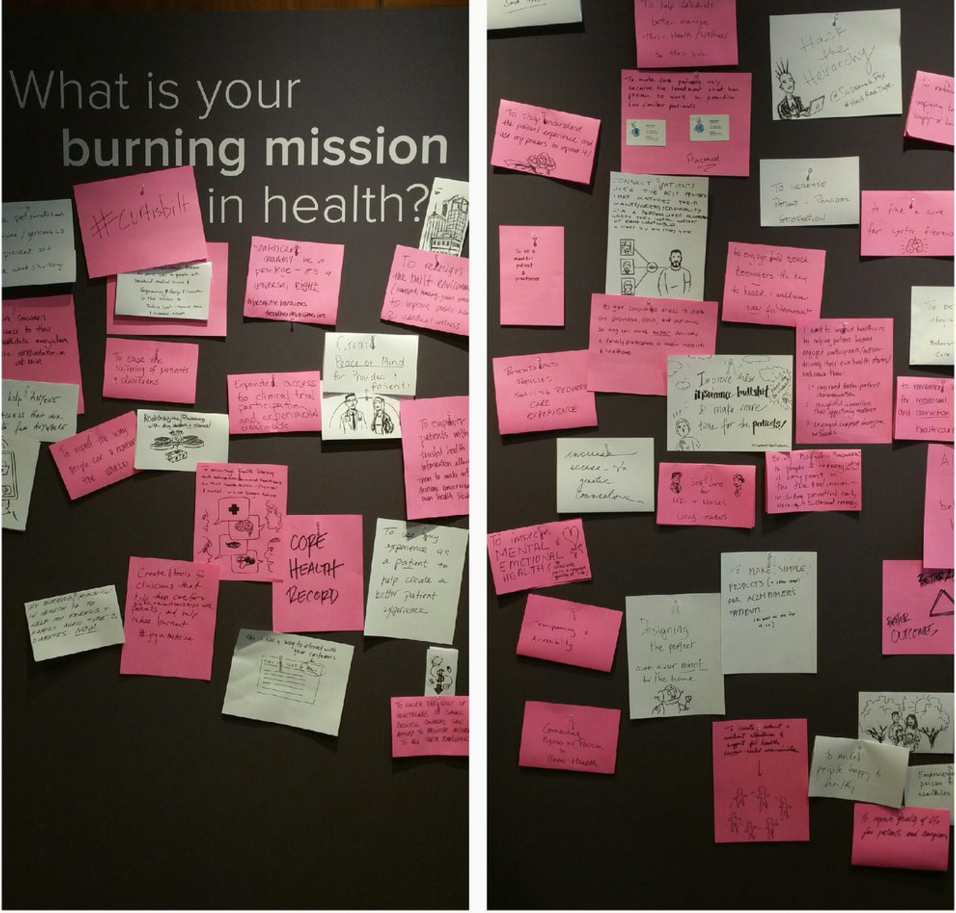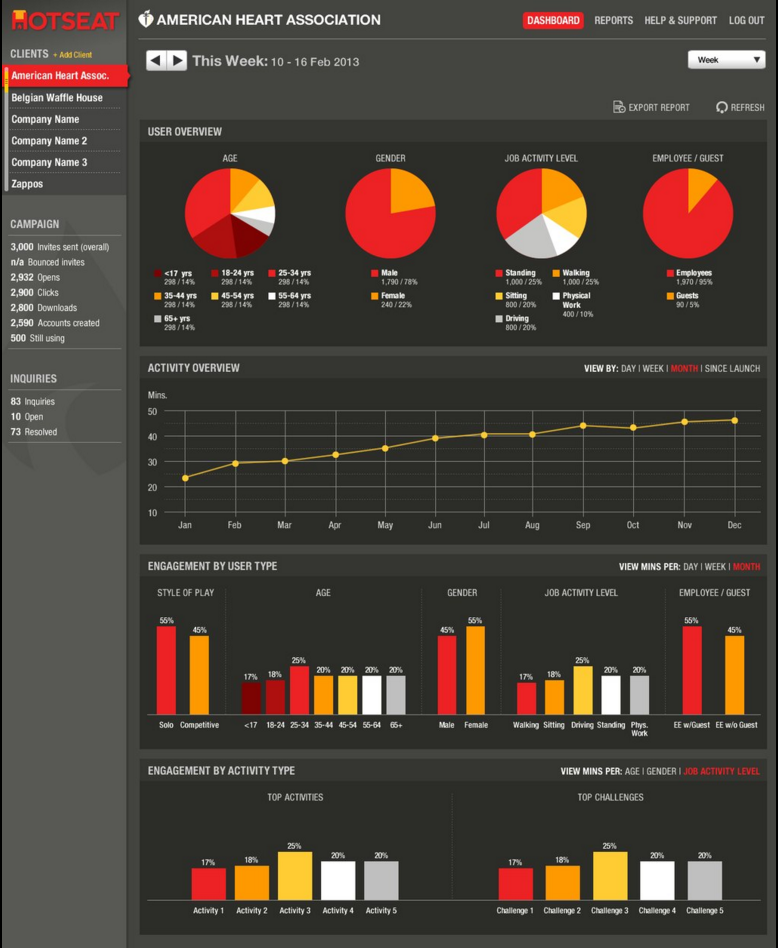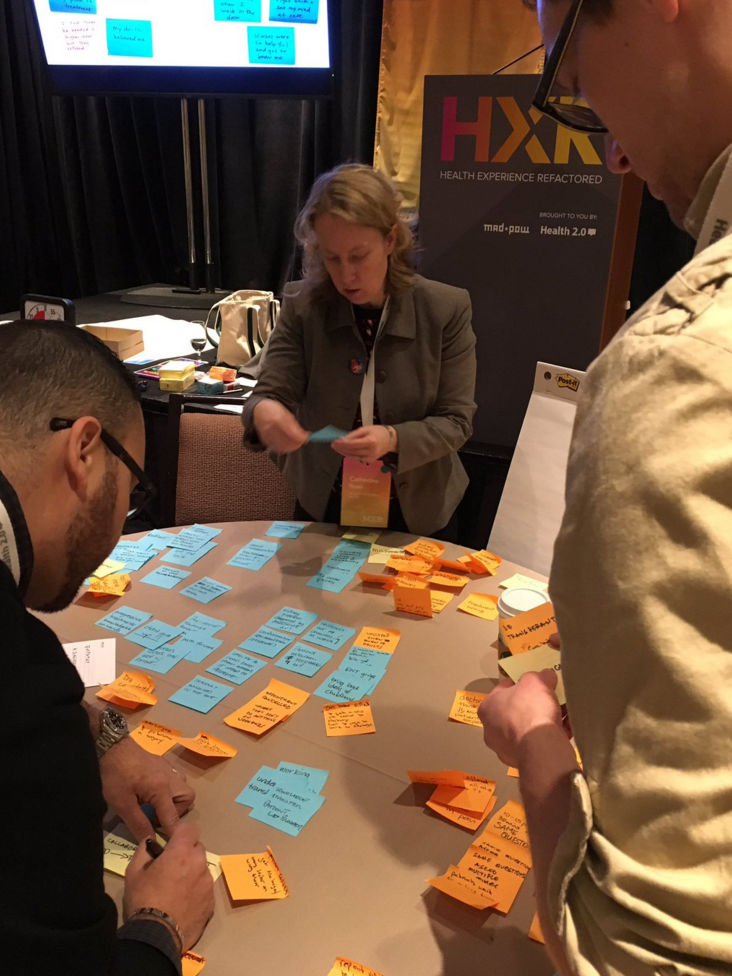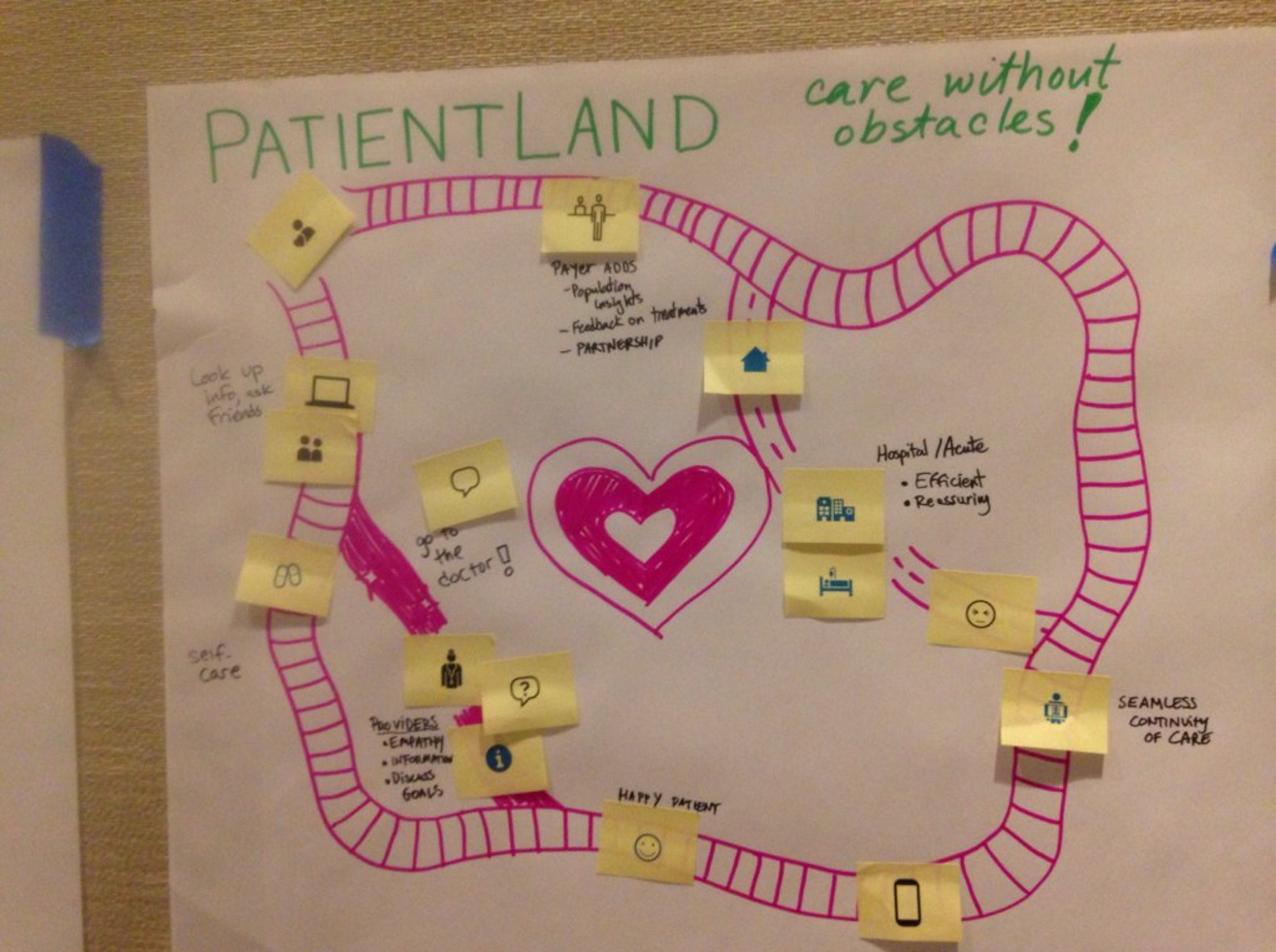
My Learnings from HxRefactored 2016
This April, I had the privilege of attending the Health Experience Refactored Conference in Boston. As a designer who has done research and published work in the community health space, I have seen first hand the importance of intentional and purposeful design in influencing behavioral change. When users feel engaged and considered, they feel empowered to take control of their life and their health. The conference, which began in 2012, has a mission to use design technology to positively impact the healthcare arena. Over 650 designers, developers and health leaders gather to discuss, attend workshops and brainstorm to identify new ways to improve healthcare experience. A large focus of the conference was on thinking of the patient as a customer for health apps and wearables like the Fitbit; however, there was also a large section that focused on the healthcare provider as the customer. The design for both customer groups is very different. For example, designing new ways of handling electronic medical records requires a separate set of design skills, than when creating a system that allows patients to access their medical records. Over two days, I attended multiple workshops, panels and sessions on topics ranging from Healthcare Experience Design to DevOps for Healthcare.

Here are my four key takeaways from this conference.
1. Improving Customer Care Experiences Through Human-Centered Design
The biggest theme on the first day was to rethink the industry's approach to user experience in healthcare software tools. Traditionally, healthcare systems and tools have not been designed with the user in mind, which has lead to poor user interactions, both for the care providers and the patients. In the healthcare domain, this can mean that people get the wrong treatment or incorrect prescriptions, and it is estimated that this kills thousands of Americans every year. Mad*Pow, a Boston based design agency, spoke heavily about this topic. They also commented on their collaboration with the app HotSeat. With a continuous focus on delighting the customer and a design process beginning with concept testing, they discovered the importance of human-centeredness in healthcare software applications. With HotSeat, they were able to create a behavior change app that allowed their users to take short breaks throughout the day, empowering them to take control of their health in a more meaningful way that fits into their existing lifestyle. This app allows for individuals to take charge of their wellness in a non intrusive way.

2. Moving From Efficiency to Delight
In recent times, the healthcare industry has adopted the importance of design thinking into the creation of software. However, something that struck me as interesting was the subtle, yet continual theme of pairing design thinking with design doing. While the concept of design doing is still a bit abstract, the fundamental principles are competence, relatedness and autonomy. What intrigues me the most about this concept is that social media tools have solved the problem of how to keep users engaged, but as the field of healthcare evolves, it is important to move the idea of healthcare software from being productive and efficient tools, to being an experience for the customer. I believe it is important to explore and determine what will cause a user to continually engage with a tool. For instance, I have been a Fitbit user for a few months now and while I enjoyed the feeling of autonomy and the constant feedback it gave me, I notice I have begun to not check it as much. It has faded into the background and I notice that I am no longer engaging with it.
3. Designing to Support Mental Health
This was a series of 3 talks by the CEO of a technology company, a doctor and a researcher on how to address, with technology, the unmet mental health needs of adolescents. The unmet health needs in the US are staggering. Unmet needs increased from 4.3 million in 1997 to 7.2 million in 2010. Rates in 2010 were about five times higher for uninsured than for privately insured persons. Mental Health is a huge unmet need in developed countries and even more so in developing countries. The relevance of these talks is to highlight that though design and mental health technology are not concepts that are conventionally combined, design should play a large part in technology that supports mental health patients. What was especially unique about this talk was that two out of the three speakers had actually struggled with mental health issues themselves. Their focus with their digital tools was on connection, communication and ensuring that there were high degrees of engagement between the users and anyone who was trying to support them. As a designer, my main goal was the integration with the current conditions of users, including those without a stable support system - the design aspect of creating exceptional community spaces. The challenge that the designer faces is to create a 'place' and not a design. Successful applications that integrate support systems are especially helpful for those who may be unwilling or unable to attend face to face therapy. By allowing the focus to remain on social interactions, designers can make tools that cause effective behavior change. Intentional design is even more important, because it is very easy for a person, with depression for example, to stop using a system if they don’t like it.

4. User-Centricity: IWWIWWIWI
This wasn’t a specific talk so much as much as an overall theme I noticed throughout the conference. IWWIWWIWI stands for “I want what I want when I want it” - the motivation being that this is the mentality behind so much of what we use already, why not apply it to healthcare as well. Many startups were present whose service focused on empowering the user to take their health into their own hands, examples being the portable health records app and many healthcare doctor-on-demand services that are being prototyped and already being used today. This is also exemplified in other applications such as the Heal app, which took the Uber service model and applied it to doctors making house calls. One thing the conference enforced was to refer to patients as customers and not as patients. This way, they are advocated for in the best way, shown respect and kept in focus while creating the best products to delight them as users. When we don’t think of our customers as patients, we not only put ourselves in the mindset of applying the best experience possible, we also empower them by advocating for their experiences. While patients don’t feel empowered to even ask questions to their doctors in many developing countries or poorer communities in developed countries, it is essential, that as technology creators in this domain, we should focus on what the customer (in this case a patient) wants.

The intersection of design and technology has always been a major focus for Thoughtworks. One of the examples of that is when a development team created an open source hospital information system and electronic medical records (EMR) system, called Bahmni, to work efficiently in resource-constrained areas like rural India, Bangladesh and Nepal. During development, the team built a touch screen or mobile application prior to the computer-based application, as it was found that the touch interface was easier to learn over the keyboard interface, by adults who have never been exposed to computers prior to this experience. The team also considered financial constraints by supporting the upload of x-rays as images instead of forcing an integration with expensive digital devices. There were many other aspects of Bahmni’s development that would be considered as examples of the overlap of design and technology. The reason this tool is now being implemented by hospitals in other developing countries across continents is because it was designed with the actual users in focus, which is often a rarity in healthcare.
Another example is a tablet-based application that a Thoughtworks volunteer team, in partnership with Save the Children, developed - an open source and adaptable EMR system to facilitate the rapid collection of high-quality patient data under stressful and potentially dangerous conditions, replacing paper-based systems and helping combat the deadly Ebola virus. This was possible only because the system was designed keeping in mind the users, their constrained environments and the various challenges on site.
A Great Opportunity
Overall, it was a wonderful conference. It provided many opportunities to network and meet more lovely people than I can remember. I would truly love to attend again. Access to public health has always been something I have been passionate about. Being able to combine my passion for health and design at Thoughtworks empowers me to solve critical problems. But above all, I love that I work for a company that shares my vision.
Intentional and purposeful design is important in influencing behavioral change. When users feel engaged and considered, they feel empowered to take control of their life and their health.
Disclaimer: The statements and opinions expressed in this article are those of the author(s) and do not necessarily reflect the positions of Thoughtworks.

















